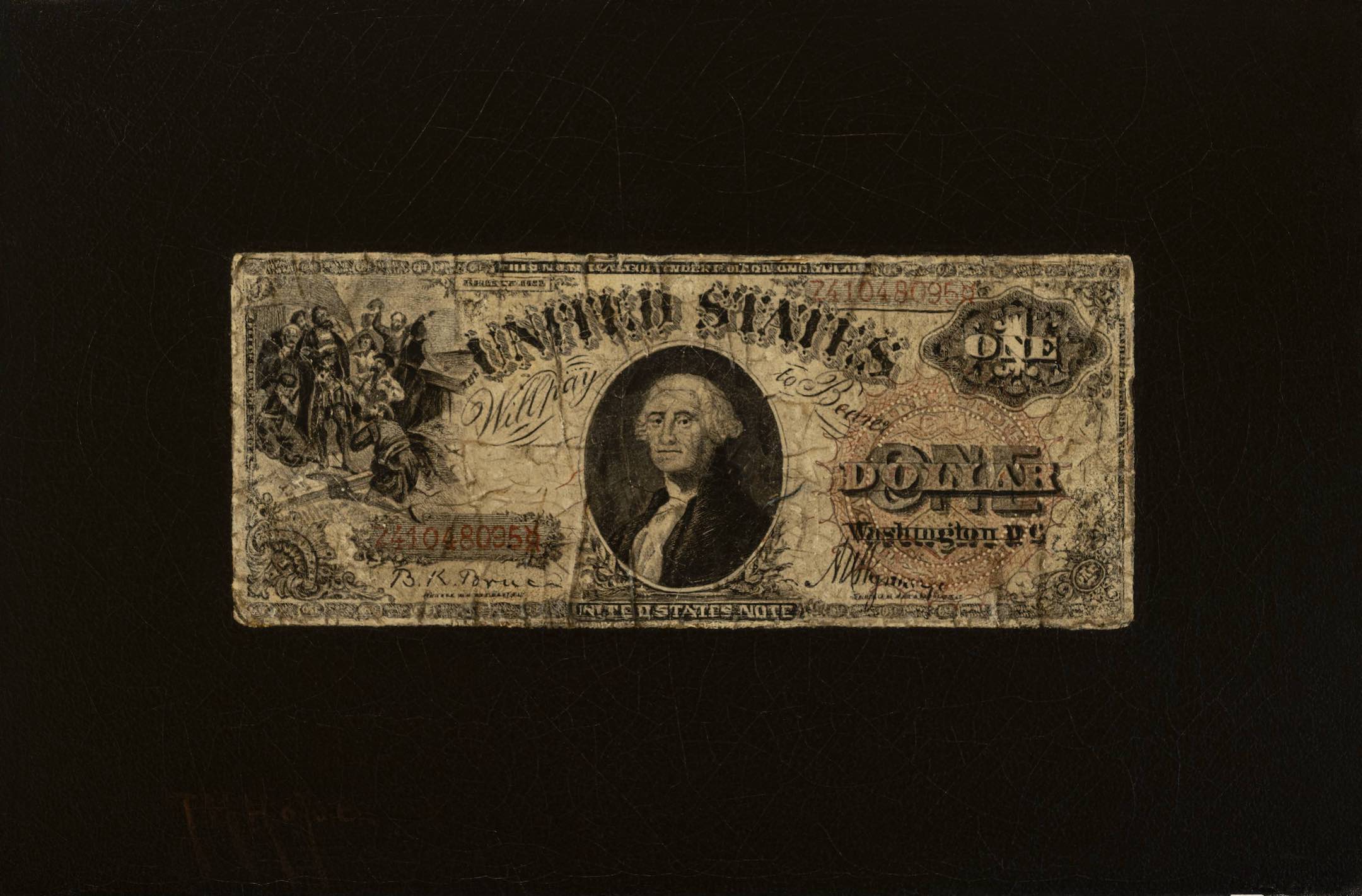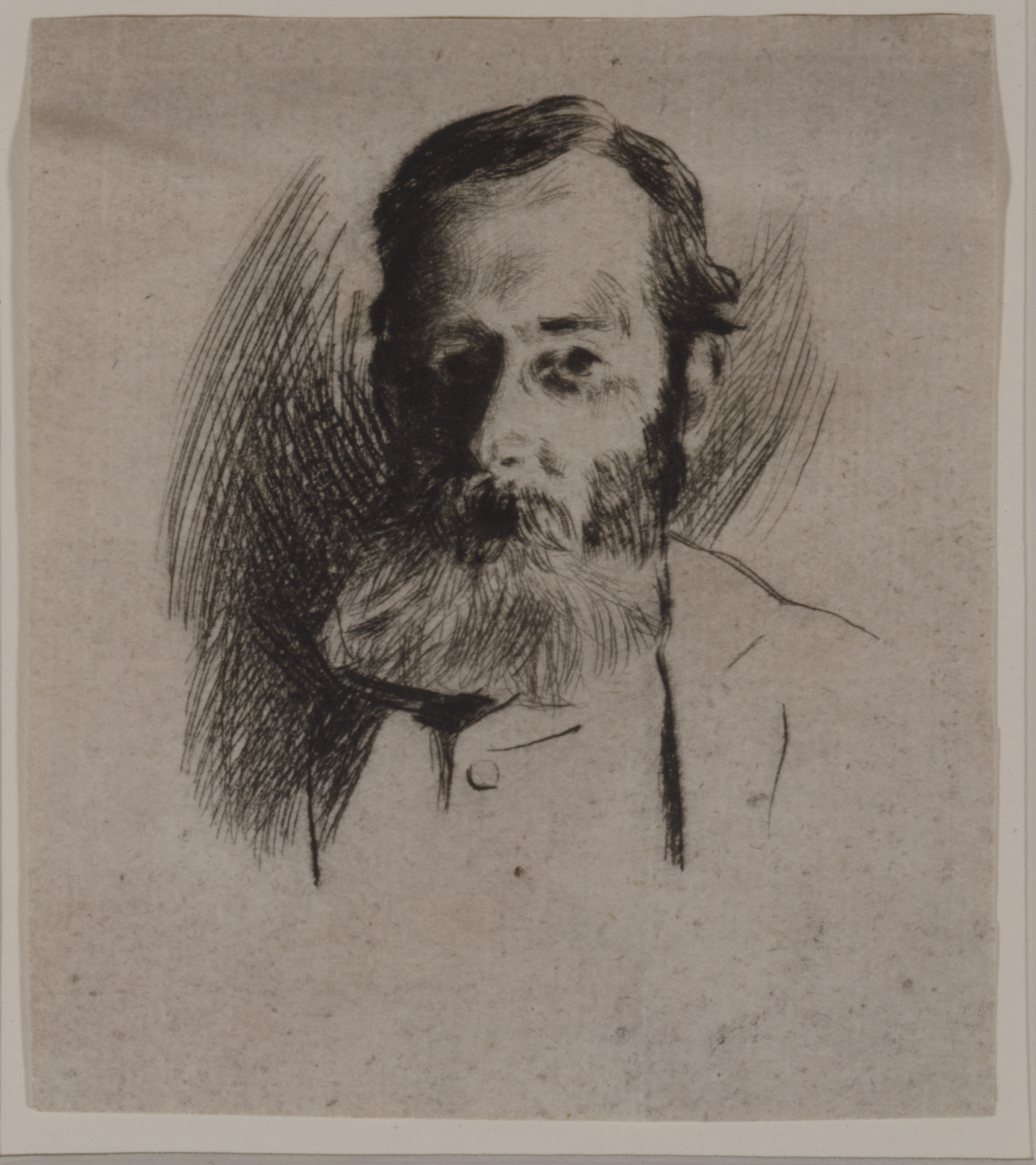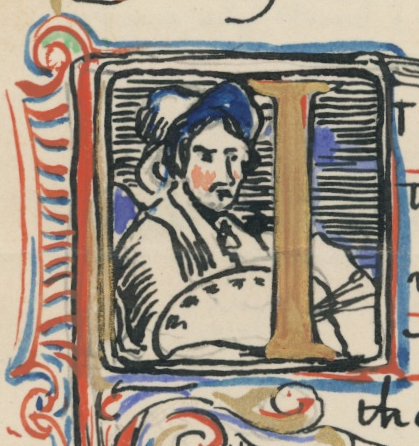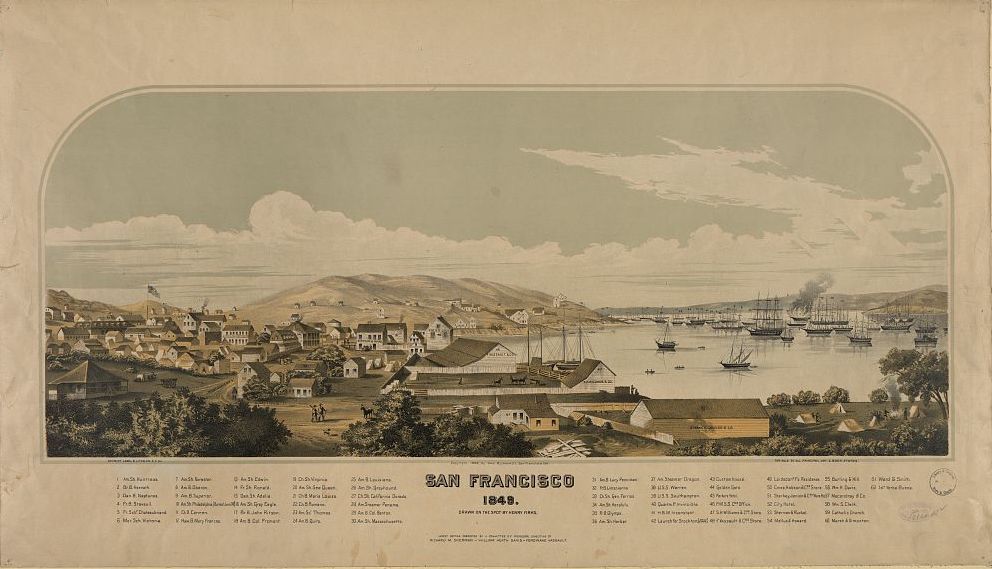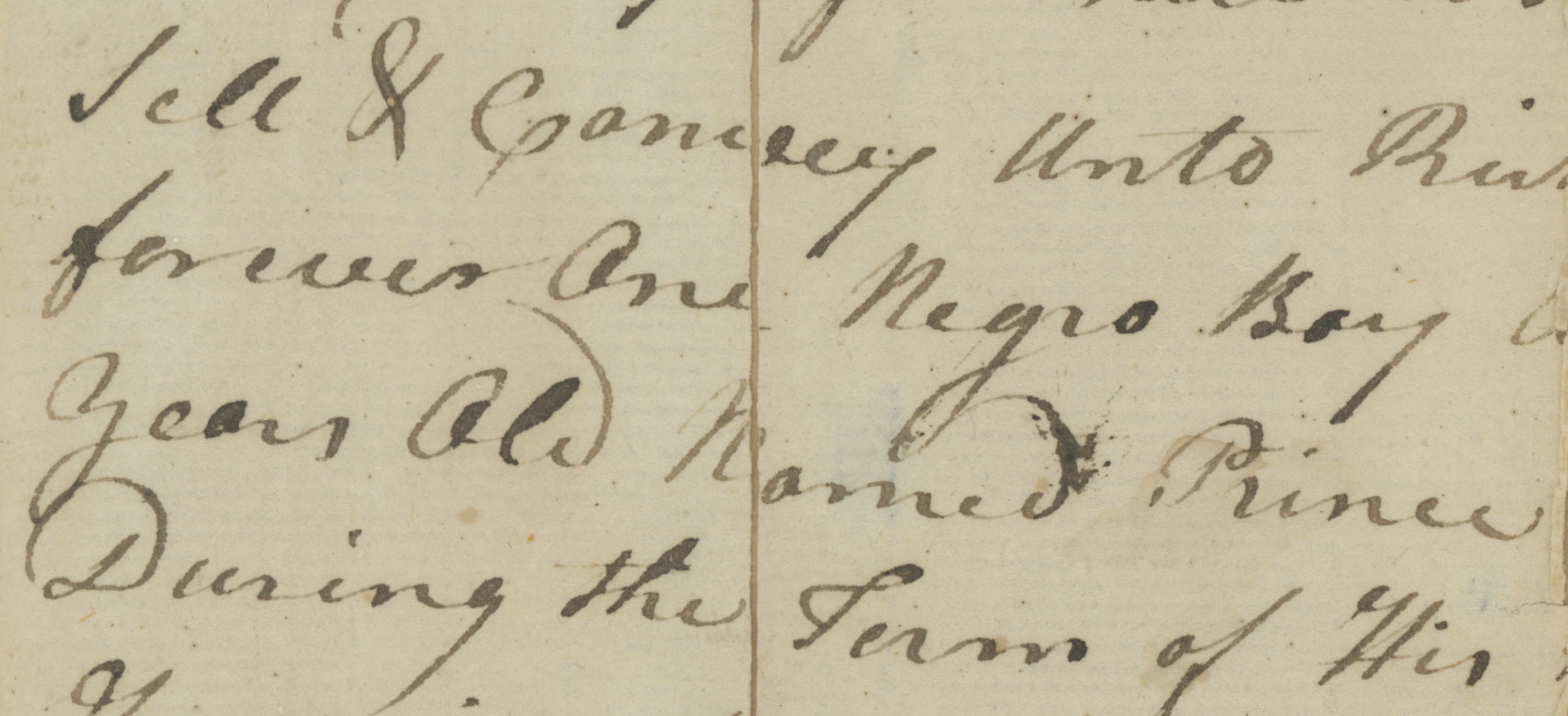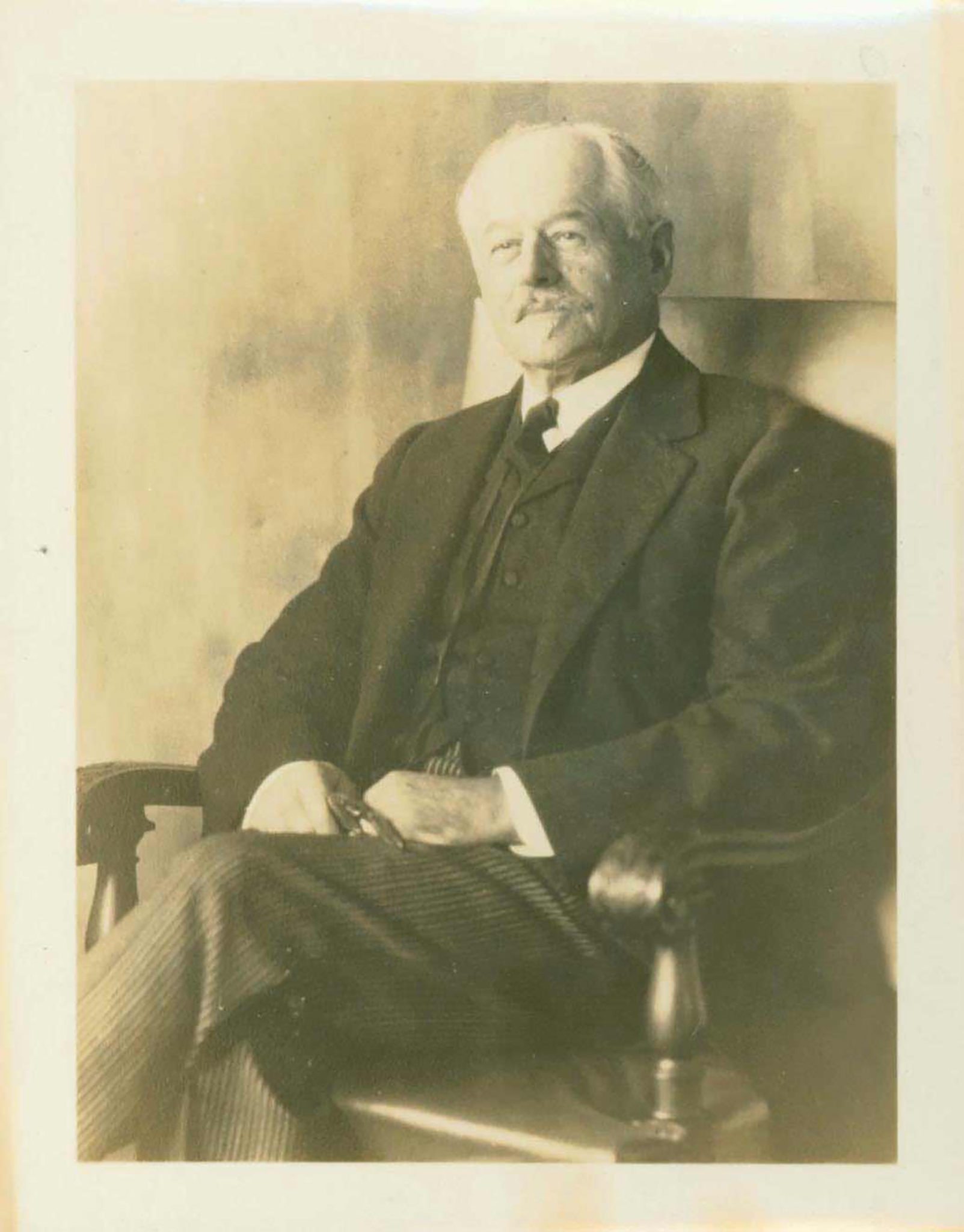
by Carolyn Wakeman
Feature Photo (above): Rev. Edward M. Chapman. Courtesy First Congregational Church of Old Lyme
The identity of the “firebugs” responsible for burning the Old Lyme Meetinghouse remained a mystery throughout the summer of 1907. Then an attempt to ignite the village schoolhouse in November brought two suspected arsonists to trial.
“If such a thing is possible, the origin of the fire that destroyed the Congregational Church at Old Lyme is going to be ascertained,” The Deep River New Era declared on July 19, two weeks after the blaze. “The leading citizens of the town are determined in this and already steps have been taken toward a solution of the mystery.”
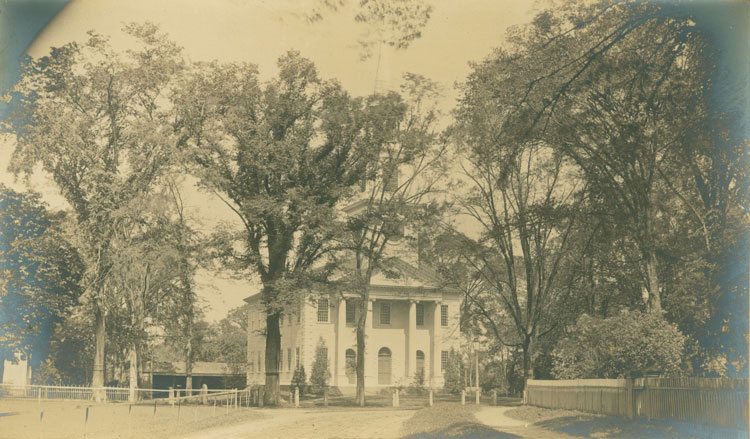
Old Lyme Congregational Church, showing Conference House and horse sheds behind, ca. 1900. LHSA
Katharine Ludington (1869–1953), whose home next door had been threatened when flames destroyed the Meetinghouse on July 3, maintained a determined optimism. “Everyone thinks that it was set on fire by the same person who burned our stable,” she wrote to her brother the following day, “and detectives are already at work on the case. . . .We have no idea how the fire originated, but following that of the stables so closely, every one thinks it must be incendiary & that is such an awful thought, that any one could do such a thing.”
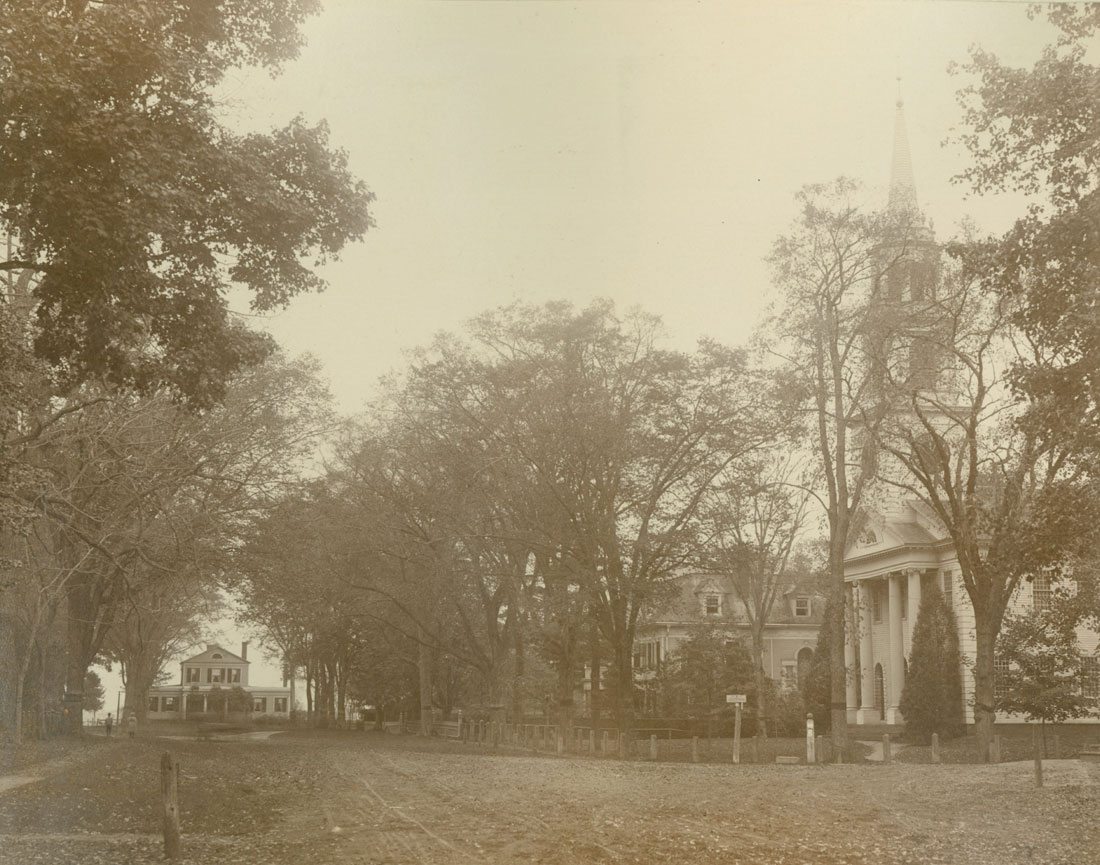
Congregational Church and Charles H. Ludington home (to the left of the church), 1905. Ludington Photo Album. LHSA
A month later Miss Ludington again voiced her family’s concern: “It is no coincidence that the fires came together & were at this end of town, whether spite against Papa, or the simple excitement of seeing the blaze was the motive remains to be seen—Detectives have been sent for from Hartford, & I hope will be successful—we shall not sleep very soundly at night until the matter is cleared up!” It felt, she said, as if they “were moving in a Sherlock Holmes thriller all the time, with the detectives and a special policeman in town, and secret meetings of the authorities, for days. . . .Everything is kept a profound secret—but I believe they are making progress in clearing up the mystery.”[1]
The New Era’s local columnist did not share her confidence. A special policeman “clad in full regalia, with brass buttons spent a few days here and then departed,” he reported. “He might as well have brought a brass band with him, and there is no doubt but that his visit has made the task of discovering the identity of the firebugs all the more difficult.” Nevertheless, there were hints about “the identity of the persons suspected,” he wrote, and “the matter will not be allowed to drop.”[2]
One hint drew Rev. Edward M. Chapman, the minister of the ruined church, into the arson investigation. On July 26, according to his diary, he met with Mr. Louks of the State Police, who asked what he knew about “A___ L___.” In a later entry Rev. Chapman noted that he had talked “freely” with Andrew Leuba, the former gardener at the Ludington estate, who had fallen ill and was leaving town. Mr. Leuba was said to be “somehow involved in arson problems or in accusing others of this,”[3] but the details of that involvement were not disclosed. By summer’s end the arson investigation had stalled.

Old Lyme Graded School, postcard. Courtesy of Carolyn Wakeman
When two suspects were arrested on November 13 after a failed attempt to burn the Old Lyme schoolhouse, hopes revived that the church arson mystery would soon be solved. The New London Day ran a front page headline: “Swears Harrigan Told Him He Fired Old Lyme Church.” For three days local readers followed the newspaper’s detailed account of the criminal court proceedings.
Under cross-examination defendant Nelson Appleby, an unemployed town resident, claimed that his co-defendant Michael Harrington, a drifter from New London, had “told him on the night of the burning of the schoolhouse that he (Harrigan) had burned the Lyme church.”[4] When Appleby’s sensational allegation could not be substantiated, his testimony was discredited. He was sentenced to four months in jail for the attempted school burning, and Harrigan was acquitted.[5] Suspicions persisted that one or both had likely set the Meetinghouse fire.
Two years after the church burned to the ground, a new sanctuary rose on the old foundation, and The New Era published an anonymous observer’s reflections on the unfinished Meetinghouse and the unsolved crime: “High Heaven somewhere looks down upon a guilty man with a scar upon his heart as red as the flame that his hand kindled.”[6]
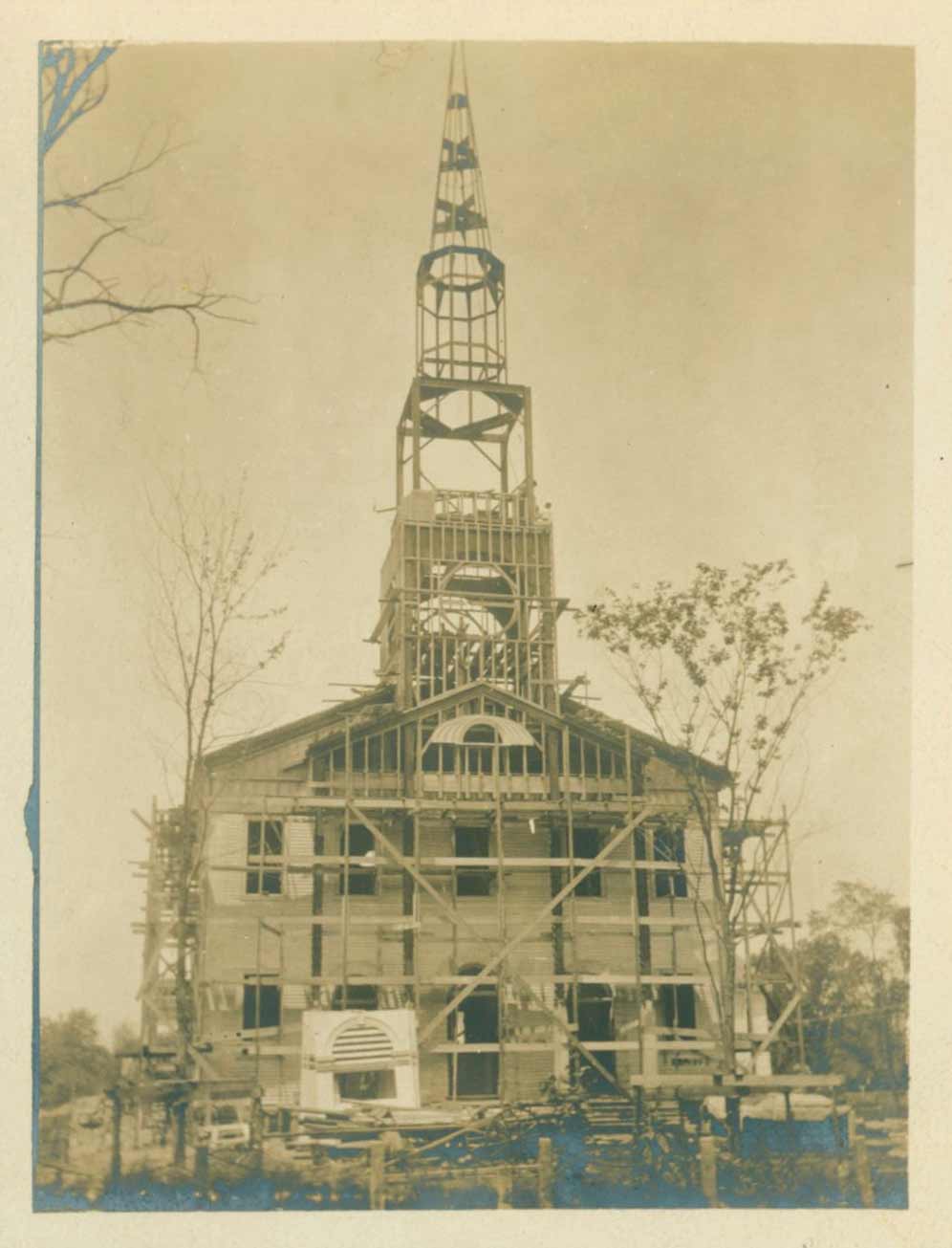
Congregational Church during construction, 1909. Courtesy Ludington Family Collection.
[1] Katharine Ludington to Arthur Ludington, July 4, 1907, courtesy Ludington Family Collection; Katharine Ludington to Helen Gilman Brown, August 2, 1907, Brown-Gilman Collection, New York Public Library.
[2] The Deep River New Era, July 19, 1907.
[3] Rev. Edward M. Chapman, Diary, July 26, 1907; August 27, 1907. Photocopy transcript, LHSA.
[4] The New London Day, January 30, 1908.
[5] The New London Day, January 31, 1908; February 1, 1908.
[6] The Deep River New Era, September 10, 1909.

